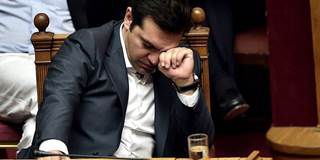The Perils of Debt Complacency
In a Project Syndicate commentary last month, Robert Skidelsky called rising levels of public debt in the advanced countries a "scarecrow" and urged more borrowing. But, as Greece, Italy, and Japan have learned the hard way, the scarecrow has teeth.
CAMBRIDGE – “What a government spends the public pays for. There is no such thing as an uncovered deficit.” So said John Maynard Keynes in A Tract on Monetary Reform.
But Robert Skidelsky, the author of a magisterial three-volume biography of Keynes, disagrees. In a recent commentary entitled “The Scarecrow of National Debt,” Skidelsky offered a rather patronizing narrative, in a tone usually reserved for young children and pets, about his aged, old-fashioned, and financially illiterate friend’s baseless anxiety about the burden placed on future generations by the rising level of government debt.
If Skidelsky’s point had been that some economies, including the United States, would benefit from higher infrastructure spending, even at the cost of more debt, I would agree wholeheartedly. Compelling reasons for boosting US public investment include deteriorating infrastructure, tepid growth, low interest rates, and limited scope for further monetary stimulus. For the US, such an impetus might be especially welcome as the Federal Reserve raises interest rates (albeit gradually) while other countries ease further or hold rates steady and the dollar likely strengthens.



CAMBRIDGE – “What a government spends the public pays for. There is no such thing as an uncovered deficit.” So said John Maynard Keynes in A Tract on Monetary Reform.
But Robert Skidelsky, the author of a magisterial three-volume biography of Keynes, disagrees. In a recent commentary entitled “The Scarecrow of National Debt,” Skidelsky offered a rather patronizing narrative, in a tone usually reserved for young children and pets, about his aged, old-fashioned, and financially illiterate friend’s baseless anxiety about the burden placed on future generations by the rising level of government debt.
If Skidelsky’s point had been that some economies, including the United States, would benefit from higher infrastructure spending, even at the cost of more debt, I would agree wholeheartedly. Compelling reasons for boosting US public investment include deteriorating infrastructure, tepid growth, low interest rates, and limited scope for further monetary stimulus. For the US, such an impetus might be especially welcome as the Federal Reserve raises interest rates (albeit gradually) while other countries ease further or hold rates steady and the dollar likely strengthens.